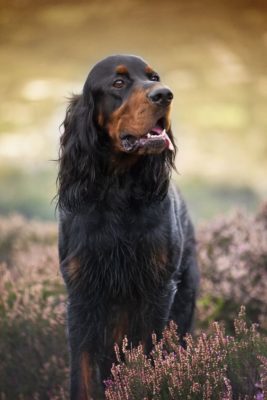Gordon Setter
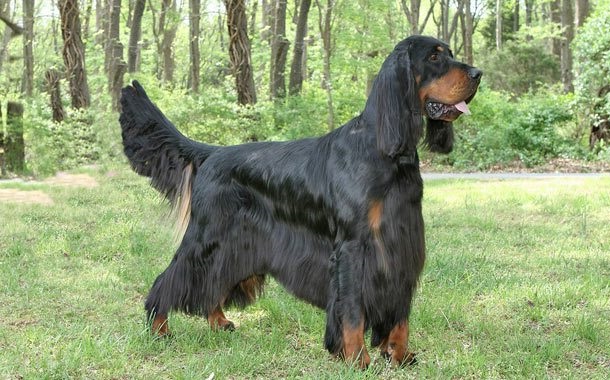
The Gordon Setter is an energetic dog with a reserved and poised personality. They are kind and loyal pets. They get attached to the owner very quickly and serve him faithfully. Dogs of this breed require a lot of human attention, and can not stand loneliness. Setters can be jealous of the owner of other pets and even put up a fight.
Table of Contents
Breed Information
| Another Name | – |
| Origin | Scotland |
| Height | Males 61-69 cm Females 58-66 cm |
| Weight | 20-36 kg |
| Fur | Long |
| Color | Black with red tinges |
| Lifespan | 12-14 years |
| FCI Classification | Pointing Dogs |
| Group | Hunting dogs, dogs for children |
| Price | $700-900 |
Breed Photos
Origin History
Dogs similar to the Gordon Setter appeared in the Middle Ages. The ancestors of the breed were the Irish Setter, the Bloodhound, and the Black Labrador. As a result of their crossing in 1860, the Gordon Setter was finally formed. The breed owes its fame to Duke Gordon. The dog is also called a Scottish setter because of the country of origin. In the middle of the XIX century, this type of setter made its way to the USA, wherein 1892 it was recognized by the American Kennel Club. The modern name the breed received only in 1924.
Appearance
Gordon Setter is considered the strongest and toughest of the setters. It is a powerful dog with an athletic build. The chest of the pet is wide, shallow. The back is straight, not long. The neck is powerful, the head is large, with a wide muzzle. The eyes are dark brown, large. The ears are floppy, long.
Gordon Setter’s limbs are straight and strong, not long. The tail is straight, does not rise above the back. The coat is long, with fringes. Color black with red undertones.
Character
The Gordon Setter is an energetic dog with a reserved and poised personality. They are kind and loyal pets. They get attached to the owner very quickly and serve him faithfully. Dogs of this breed require a lot of human attention, and can not stand loneliness. Setters can be jealous of the owner of other pets and even put up a fight. Therefore, it is best to have a pet alone. Scotties treat children with great trepidation and affection and can babysit them.
Since Gordon Setter is primarily a hunting dog, excessive stubbornness is one of its key traits. There is no point in changing any of the pet’s habits. It is important to educate the puppy from an early age properly.
Care
The optimal variant of keeping a freedom-loving and mobile setter is a country house with a large plot. But it is strictly forbidden to keep the pet on a leash in an enclosure. The apartment is also too small for the inveterate hunter, who needs constant physical activity and space.
The Gordon Setter’s coat requires daily brushing with a metal brush. It is covered with a substance that repels dirt. Therefore, you should not bathe your pet more than once a month. Keep an eye on the condition of your dog’s long, floppy ears and clean out wax and debris.
Training
Training a Gordon Setter requires persistence and patience. In general, the dog is obedient but has a stubborn disposition. So you should have a lot of patience. From the first day, you should start training basic commands, gradually increasing their complexity. Never shout at your dog or punish him for making a mistake. Rather, show patience and leniency and encourage your dog. The result will be positive.
Take your dog for lots of walks and take him to the woods from an early age. A setter needs special training to become a real hunter. Specially trained people best handle it.
Common Diseases
Gordon Setters are naturally healthy. Dogs of this breed are prone to these ailments:
- hip dysplasia;
- hypothyroidism;
- progressive retinal atrophy;
- cataract;
- stomach torsion.
Once a year, take your pet to the veterinarian for a complete check-up and get his vaccinations on time. Pay special attention to the health of his eyes and ears. Advanced retinal atrophy can lead to partial or complete blindness.
Nutrition
Your pet’s health depends directly on a good diet. Gordon Setter does not eat much and is not prone to obesity. But it’s the owner’s job to make a balanced diet. Some owners prefer to feed their dogs natural food. Others prefer ready-made dry food, which has several advantages. They have a balanced composition that includes all the necessary vitamins and minerals. Using these foods saves time for cooking, and they are also very healthy. The daily allowance is based on the height and weight of the pet.
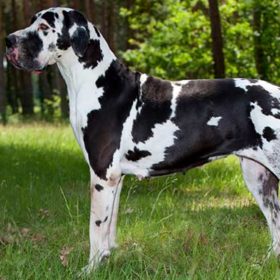 Great Dane
Great Dane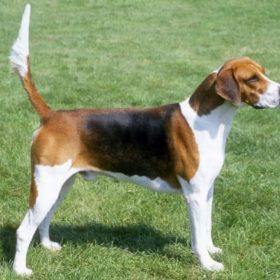 English Foxhound
English Foxhound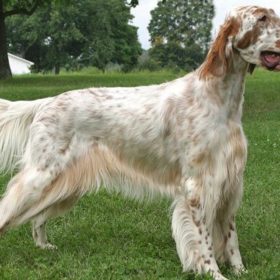 English Setter
English Setter Saluki
Saluki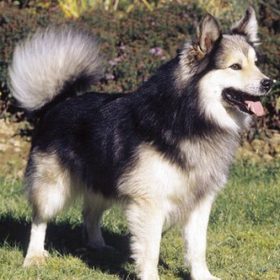 Icelandic Sheepdog
Icelandic Sheepdog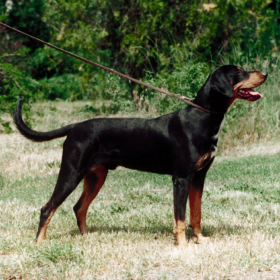 Transylvanian Hound
Transylvanian Hound
